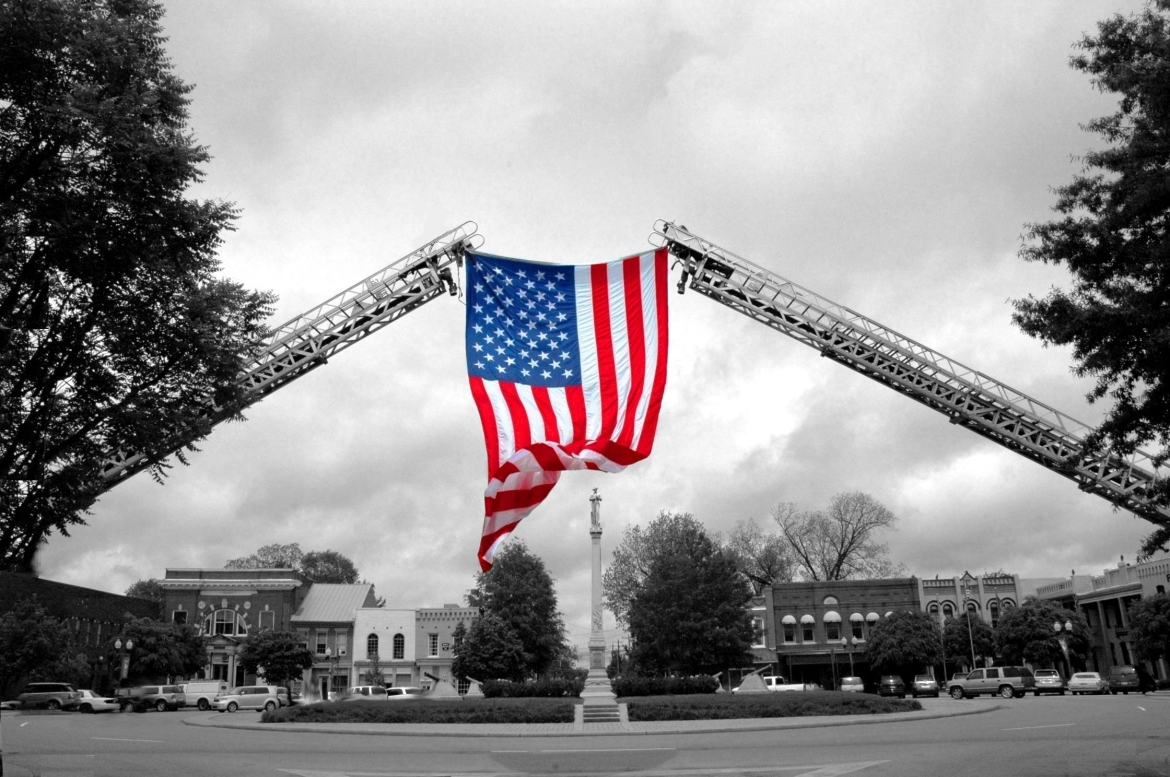Happy Flag Day, y’all! What is Flag Day? It’s an official honoring of the Flag of the United States. (Did you know that’s the official name of the red, white and blue?) It’s a day to fly your flag, or in my case, be prompted to buy a new one. It’s a day to remember its symbolism, its story, the places it’s been and the sacrifices that have been made for our nation. Most of us know the story of Francis Scott Key authoring the Star Spangled Banner during the battle of Fort McHenry, but many more stories deserve to be told about the history of the flag. Take five minutes today to hear a couple more?
In 1949, President Truman officially declared June 14th as Flag Day to honor The Flag of the United States, thanks in large part to a Wisconsin school teacher who spent decades gathering citizens and government officials toward organized Flag Day celebrations. The teacher, Bernard Cigrand, desired to honor the Stars and Stripes on the date of its adoption as our national standard – June 14, 1777. On this day, the Second Continental Congress ordered “the flag of the United States be made of thirteen stripes, alternate red and white; that the union be thirteen stars, white in a blue field, representing a new constellation.” The colors also hold significance as well: white represents purity and innocence; red, hardiness and valor; blue signifies vigilance, perseverance and justice.
Photo credit: Hugh Tharpe, Police Officers’ Memorial Day 2009, Franklin, TN. All proceeds of print sales go to servicemen and women. Comment for more info!
The red white and blue captured Mr. Cigrand’s heart just as she did another obscure history-maker who is laid to rest right here in Nashville.
Captain William Driver sailed the seas on his 1820s vessel the Charles Doggett. In 1824, as he was setting out from his hometown of Salem, Massachusetts, he was presented with a 24-starred, 12′ by 24′ U.S. Flag hand-sewn by his mother and other women of Salem. The story is told that as the flag was hoisted up the ship’s mast and unfurled in its first ocean breeze, Captain Driver exclaimed in delight, “Old Glory!”
After two round-the-world voyages, Captain driver retired and settled in Nashville at 511 5th Avenue South (one block south of the Music City Center; look for an historic marker). He was known in town for his legendary voyages as well as for his prize possession, his original Old Glory, which he would display on patriotic days on a rope tied from his second-story window to a tree across the street. In 1861, after Tennessee seceded from the Union, Rebels barged into his house more than once looking for the famous flag to destroy it. Old Glory survived the Civil War hidden inside the captain’s bedspread! The story is told that the day Union soldiers entered Nashville, Captain Driver unstitched his bedding, carried the flag up the hill, and raised it high atop the State Capitol. Thus the original Old Glory flew for the last time.
Captain Driver spent some of his last words bequeathing the Flag to his daughter: “Mary Jane, this is my ship’s flag, Old Glory. It has been my constant companion. I love it as a mother loves her child. Cherish it as I have cherished it.” The sailor was laid to rest in Nashville’s Old City Cemetery in 1886, where by congressional decree a flag is posted 24/7 even without nighttime lighting (a special exception to flag etiquette). Old Glory was kept by the Driver family and given to the Smithsonian in 1922, where it is displayed today in the National Museum of American History.
Of course, Betsy Ross is the historical face of the first American Flag, but her story may be only legend. After scouring over congressional and business records, personal writings and family lore, historians believe the primary designer was most likely New Jersey Congressman and Declaration of Independence signer Francis Hopkinson. (You won’t believe what he asked of Congress for his design fee!) While the established Philadelphia seamstress did embroider George Washington’s shirt ruffles, there is no historical evidence that she made the first flag. However her story goes on as an American favorite… one this seamstress will pass down to her daughter!
If you enjoy flying a flag at your house, or would like to teach your children flag etiquette, look over the flag facts here. Several websites, referenced in writing this article, have more information: www.usflag,org, www.vfw.org, www.nationalflagday.com, and www.pbs.org/capitolfourth. Also remember that each Flag of the United States is to be retired with honor in a particular fashion. Boy scout troops hold such ceremonies from time to time, so look for one in your area.
Flag Do’s and Don’ts
- Do not use the flag as clothing
- Never use the flag for decoration; instead use bunting with blue on top, then white, then red
- Display the flag between sunrise and sunset; only display at night if directly lit
- To indicate flying at half-staff, tie a black ribbon to the finial of your house-mounted flag
- When displayed against a wall or a window, the blue field should be on the top left
- Do not let the flag touch the ground
- Do not fly the flag upside down unless there is an emergency
- When the flag is raised or lowered in ceremony and as it passes by in parade or review, everyone, except those in uniform, should face the flag with the right hand over the heart
Happy Flag Day everyone! Fly those flags today!



Sisse
So good…thank you, Rachel.
Rachel Norris
Reblogged this on Beauty Runs Deep.